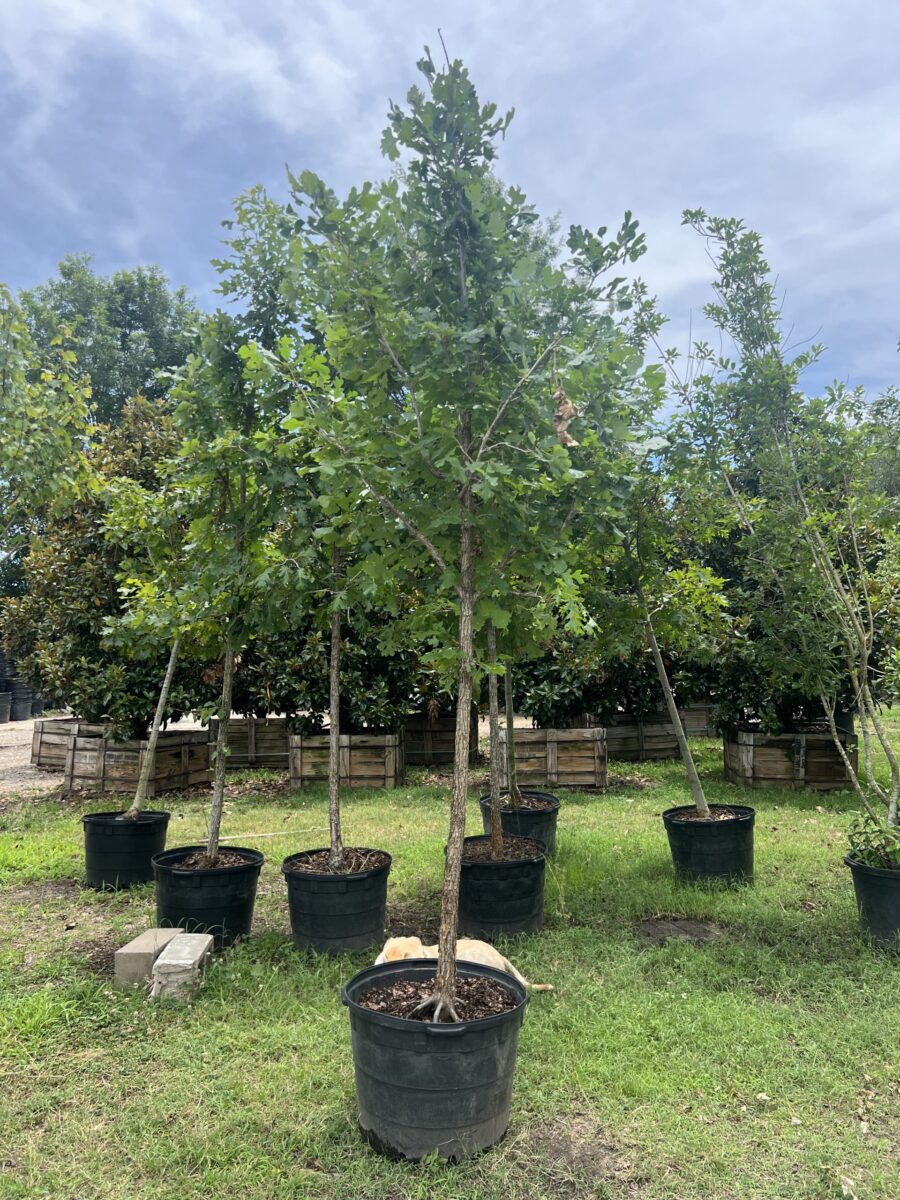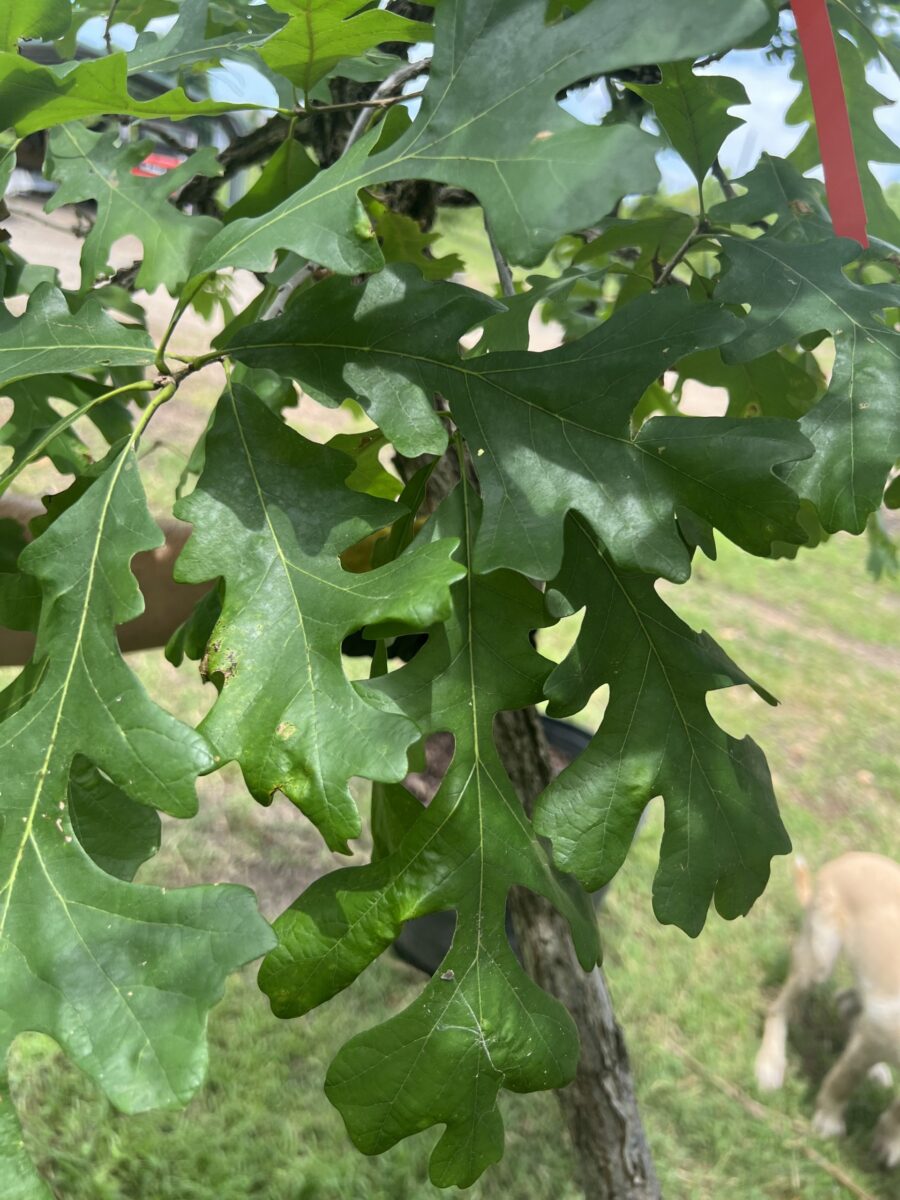

Quercus magrocarpa
Description: The Bur Oak is a large tree that can reach heights of up to 100 feet, often growing equally wide, resulting in a broad, rounded crown. This species typically has a wider spread than height, supported by a massive trunk that bears heavy, horizontal limbs. Its impressive size and robust structure make it a notable feature in any landscape.
Twig/Bark: The bark is dark gray, thick, and deeply furrowed, featuring flat, scaly ridges that contribute to its rugged appearance. The twigs are grayish and may develop corky wings or ridges as they mature.
Leaves: The leaves of the Bur Oak are simple and lobed, with 3 to 5 lobes on each side that increase in size toward the apex. The upper surface of the leaves is dark green, while the lower surface is grayish-green. In the fall, the foliage displays a striking transformation, turning shades of yellow to brown.
Flower/Fruit: The acorns produced are notable for their bowl-shaped cups, which feature curled fringes that extend beyond the cup. These acorns are an important food source for various wildlife species.
Habitat: The Bur Oak thrives in a diverse range of habitats, including bottomland and riparian forests, hardwood flatwoods, and dry-mesic to mesic upland forests and woodlands. It is also commonly found in savannas, pastures, and along the edges of blackland prairies, often growing on calcareous substrates, which highlight its adaptability to various soil conditions. This species exhibits intermediate shade tolerance, allowing it to thrive in both open and partially shaded environments.
